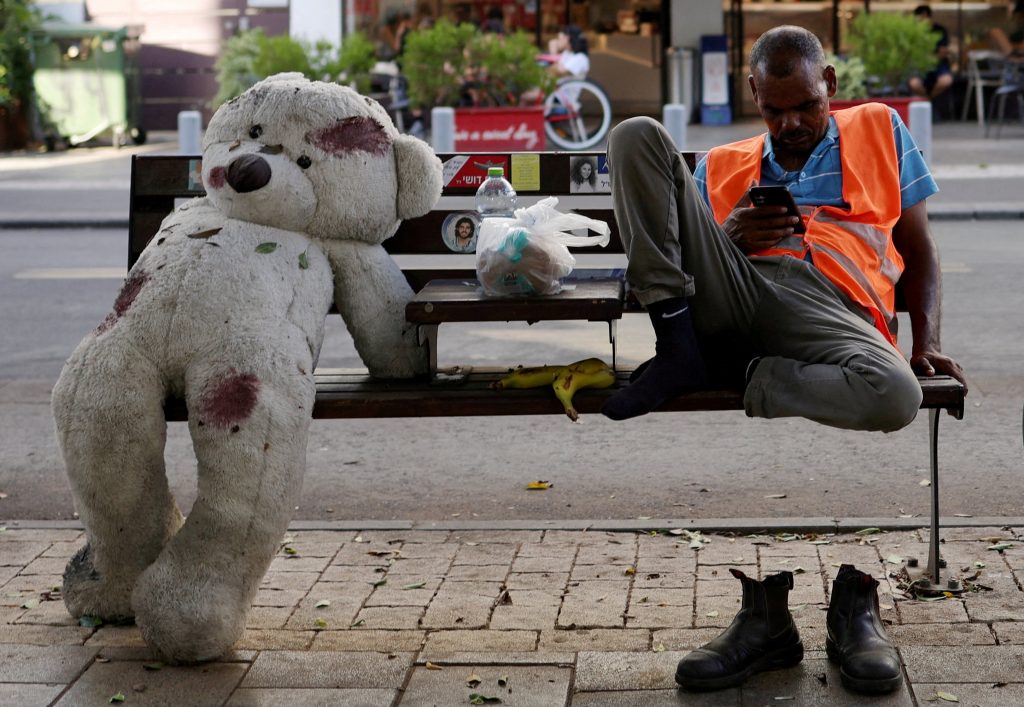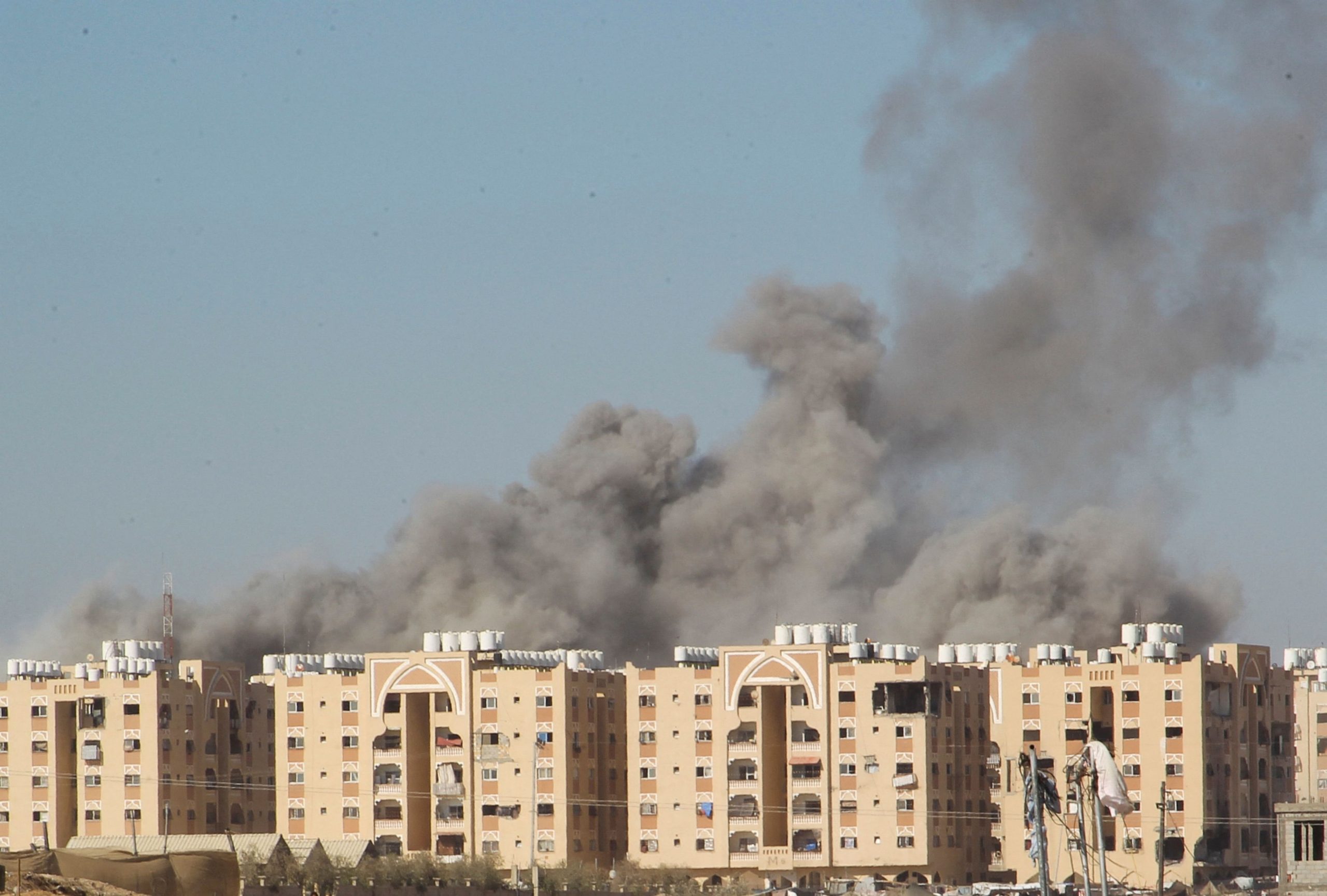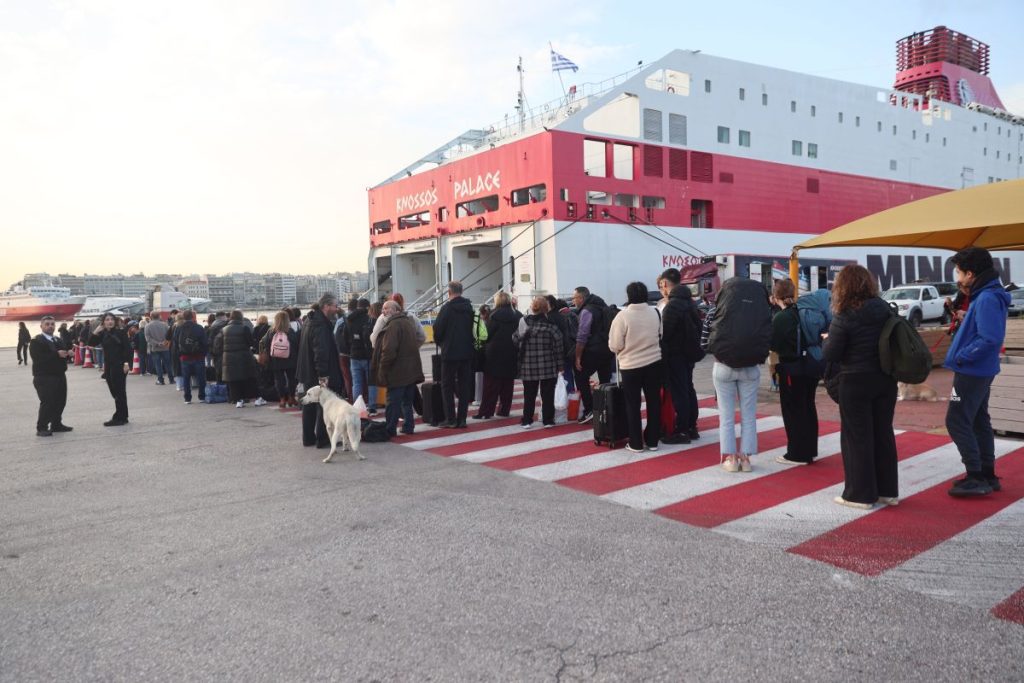A two-day Gaza cease-fire summit concluded in Doha on Friday with talks at their most critical point yet, leaving significant gaps between Israel and Hamas despite indications by mediators that progress had been made.
As the senior Israeli delegation wrapped up the meetings with U.S., Egyptian and Qatari officials, the Middle East is bracing for the possibility of a wider war, after Iran and its militia allies threatened to retaliate for the killings last month of a Hamas official in Tehran and an official from Iran’s ally Hezbollah in Beirut.
With the U.S. leading the talks and determined to reach a deal after over 10 months of war in Gaza, while also looking to stave off a potential Iranian attack on Israel, President Biden spoke of progress in the cease-fire negotiations.
“We are closer than we’ve ever been,” he told reporters at the Oval Office on Friday. “We’re not there yet,” he said, but “we’re much, much closer than we were three days ago.”
Biden made the comments shortly before phone calls with the leaders of Qatar and Egypt to discuss the state of the negotiations, National Security Council spokesman Sean Savett said.
Biden and other senior U.S. officials have previously declared that they were close to reaching a cease-fire deal, but an agreement—with the major foreign-policy achievement that it would represent—has proved elusive. The last negotiated pause in fighting took place in late November.
The goal is a deal that would bring a cease-fire, the exchange of Palestinian prisoners held by Israel for the release of hostages held by Hamas, and a path toward a future for the governance and rebuilding of the Gaza Strip.
In the latest talks, the Israeli negotiators’ positions softened issues including Israeli military control of specified Gaza territory and the release of Palestinian prisoners, mediators said. Leaders from Israel and Hamas, however, didn’t publicly sign on to those shifts in position.
The Israeli prime minister’s office didn’t respond to a request for comment.

A man sits on a bench, next to a teddy bear that symbolises hostages kidnapped during the deadly October 7 attack on Israel by Hamas, in Tel Aviv, Israel August 16, 2024. REUTERS/Florion Goga
Where cease-fire negotiations stand
A shared statement by the three mediating countries, the U.S., Egypt and Qatar, which was released after the talks concluded on Friday, called the meetings serious and constructive and said that a bridging proposal had been presented to both Israel and Hamas to overcome gaps between the two sides.
Technical teams are scheduled to meet over the next few days to discuss remaining details and arrangements and senior officials aim to reconvene for meetings in Cairo next week, according to the statement.
Secretary of State Antony Blinken is heading to Israel on Saturday to continue efforts to reach a deal, the State Department said on Friday in a statement that pointed to the importance of sustained progress in negotiations, given the threat from Iran and its allies. “Secretary Blinken will underscore the critical need for all parties in the region to avoid escalation or any other actions that could undermine the ability to finalize an agreement,” the State Department said.
The sticking points
Israeli Prime Minister Benjamin Netanyahu and Hamas leader Yahya Sinwar have resisted an agreement, negotiators and officials in their own camps say.
A significant issue in recent rounds of talks has been Netanyahu’s insistence to keep Israeli military forces in two strategic corridors in the Gaza enclave—the Philadelphi corridor, and the Netzarim corridor, which divides the enclave.
During the last round of talks in July, when Israel’s negotiating team brought up Netanyahu’s demands for securing strategic corridors in Gaza, Egyptian intelligence chief Abbas Kamel lost his temper and said that Netanyahu was wasting his time, according to people familiar with the matter.
Other sticking points include whether any halt to fighting would be temporary or become permanent, how to secure the border between Gaza and Egypt, Israel’s ability to screen Palestinians returning to northern Gaza, which Palestinian prisoners would be approved for release and the number of living hostages to be freed.
The war in Gaza began after the Hamas-led attack on Israel on Oct. 7 in which Israel says 1,200 people were killed and around 250 taken hostage. The death toll in the Gaza Strip has edged above 40,000 people, according to Palestinian health officials, whose numbers don’t say how many were combatants, and the war has decimated the once-bustling enclave.
Signs of progress in Doha
The Israeli team showed willingness to discuss pulling its military forces east of the Philadelphi corridor, a border between Egypt and Gaza that Israel took over in late May, while Egypt will invite Palestinian factions to Cairo to discuss a mechanism for control of the corridor, Arab mediators involved in the talks said.
Israel agreed to raise the number of aid trucks going into Gaza each day to 600, with parties monitoring the entry and delivery of aid through newly established offices, the mediators said. Israel also cut by around half a list of Palestinian prisoners it had previously refused to release, they said.
The senior Israeli delegation to Doha included spy chief David Barnea and internal-security chief Ronen Bar. They met with Central Intelligence Agency Chief William Burns, White House Middle East coordinator Brett McGurk and Qatari Prime Minister Mohammed bin Abdulrahman al-Thani. Hamas officials didn’t attend but were updated on their progress in real-time by mediators, according to Egyptian officials.
What’s at stake
At stake in the negotiations is the future of the battered Gaza enclave and its residents, the fate of over 100 hostages in Gaza and the possibility that a continued war in Gaza will spark a wider regional war.
Gazans suffer from growing hunger, spreading diseases and a struggling medical system.
Some 250 hostages—Israelis and foreigners—were taken from villages, a music party and military bases on Oct. 7. There are 111 remaining in captivity, including at least 39 confirmed dead, according to Israel. Israeli and American officials believe the hostages are running out of time in the tunnels of Gaza and privately estimate the number of dead is even higher due to untreated wounds, lack of food, ill treatment by captors and the danger of Israeli airstrikes.
Seven U.S. citizens remain in Gaza, including three dead. The remaining hostages are mostly Israeli but also include citizens of Thailand and Nepal.
Reaching a deal remains a high priority for mediators. “The path is now set for that outcome, saving lives, bringing relief to the people of Gaza and de-escalating regional tensions,” the statement by mediators read.
Hostage families remain cautiously hopeful but having been let down before say they have learned to believe talk of progress only when it is tangible, said Rachel Goldberg-Polin, mother of U.S.-Israeli citizen Hersh Goldberg-Polin who was taken hostage on Oct. 7.
“I just pray that the news we have all been beseeching for comes and we don’t have to wait another week and another week and another week and the numbers of people who are still alive just keep dwindling and dwindling.”
Alexander Ward contributed to this article.



